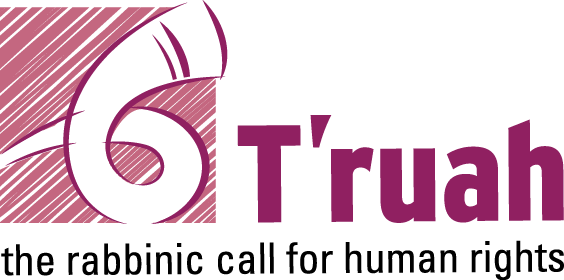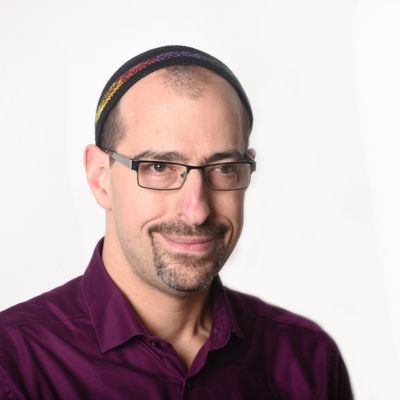What is the Torah inscribed on our lands and in our hearts?
What Torah do we bring with us into a new land?
Before Moses dies, he wants to ensure that the Israelites are prepared to enter the Land of Israel. In our parshah, in Deuteronomy 27, he prescribes a ritual for them to do once they cross over the Jordan River. The tribes will be split between two mountains, with an altar for sacrifices built on Mount Eval. The Torah will be written on large stones they must gather after crossing the river. Blessings and curses will be said out loud — blessings on Mount Gerizim and curses on Mount Eval. The entire community will again re-covenant itself to God and Torah.
If they’re going to spread out throughout the land, why do they need to inscribe Torah on stones, and why immediately after crossing over the Jordan River? Commentators disagree as to what exactly they were supposed to write on the stones — the whole Torah, the Torah translated into 70 different languages (just how big were these stones?), the 613 mitzvot, the 10 Commandments, or the blessings and curses they are about to proclaim.
Commentators also disagree as to why they are meant to write Torah on these stones. Is the Torah they write on them a reminder to other nations that Torah is the law of the land? Are the stones a way to show their love and connection to God? Are they a reminder to themselves of the momentousness of what they have achieved? Yes, yes, and yes. Some scholars think that having the Torah on stone was also a way for everyone to come back and learn the original Torah — these stones would serve as the urtext for generations. Some say that the stones are a reminder to everyone that ours is not a religion of elites, that everyone has access to Torah. The stones and the Torah they carry are here for all.
Find more commentaries on Ki Tavo.
It is also unclear, from the Torah’s telling, if the stones of the altar and the stones inscribed with Torah text are two separate entities or one and the same. How many rituals do we need to remind ourselves of who we need to be and what we are committed to? One ritual may not suffice. Like life, ritual needs to be repeated and renewed.
The covenant ceremony clearly harkens back to Mount Sinai. This time, after 40 years of desert wandering, instead of God inscribing the stones, the people can do it themselves.
Perhaps seen in this light, the ceremony is also a reminder to the Israelites that Torah and connection to God go hand in hand. Before you spread yourselves out throughout the land, make sure that you hear words of Torah and feel connected to the mission of our people.
I’m struck by the fact that the altar of stones, where the Torah was inscribed, is built on Mount Eval, where the curses are to be recited, and not on Mount Gerizim, where the blessings are spoken. Isn’t Torah a blessing to us and to the world? Why should we build an altar amidst curses?
The blessings tell us that if we follow the ways of Torah, we will be successful, our enemies will flee, we’ll have an abundance of rain, produce, animals, and children, and we will know that we are God’s holy people. If we don’t, extraordinary plagues and sickness will come our way, our hearts will be anguished, our eyes will pine for a better life, and our spirits will be despondent. We will be driven mad by what our eyes behold, and we’ll feel terror and dread night and day. We will find no peace.
When I read these blessings and curses, I can’t help but think of addiction, which steals the hopes and yearnings of so many, and drives us mad with anguish, emotional and physical maladies, and precarious living. I remember the days when I didn’t know who I was or what I was here for, when I yearned for a better life but knew that nothing could ever improve. Active addiction is a madness I wouldn’t wish on anyone.
Find more commentaries on Social Justice: Leadership and Philosophy.
In my left pocket, I carry with me my recovery coin. It reminds me how long I’ve been in recovery (nine years in December), and when I am tempted to do something the old version of myself would have done, the coin is a tangible reminder that while I have free choice, there are painful consequences if I walk away from my best self and my recovery journey. Addiction is the Egypt I do not wish to return to, and I need the reminder every single day that an imperfect life in the Promised Land is so much better than the illusion of a good life anywhere else. The altar of stones on Mount Eval is a reminder that the curses we wish to avoid need not come to pass. We can choose life, today and every day.
All around the world, there are millions struggling with the ravages of addiction and other curses. Thankfully, recovery and healing are possible, though only if we are willing to do the hard work of repairing our lives and can find a support system that guides us as we do.
What Torah do we bring with us into a new land? Does it lift us and others up into a better way of living? What do we need to remember who we are? Have we inscribed ourselves with fear, and if so, can we find ways to heal and to add love to the mix as well?
As we begin National Recovery Month and head toward the High Holidays, may we all be blessed with a renewed covenant — with ourselves, each other, and the Holy One. May happiness, holiness, and healing come to us all, one day at a time, and may we inscribe ourselves and each other with love.
Rabbi Ilan Glazer is the Founding Rabbi and Director of Our Jewish Recovery, a community dedicated to supporting everyone impacted by addiction in the Jewish community. For more information, please visit www.OurJewishRecovery.com and facebook.com/groups/OurJewishRecovery.

